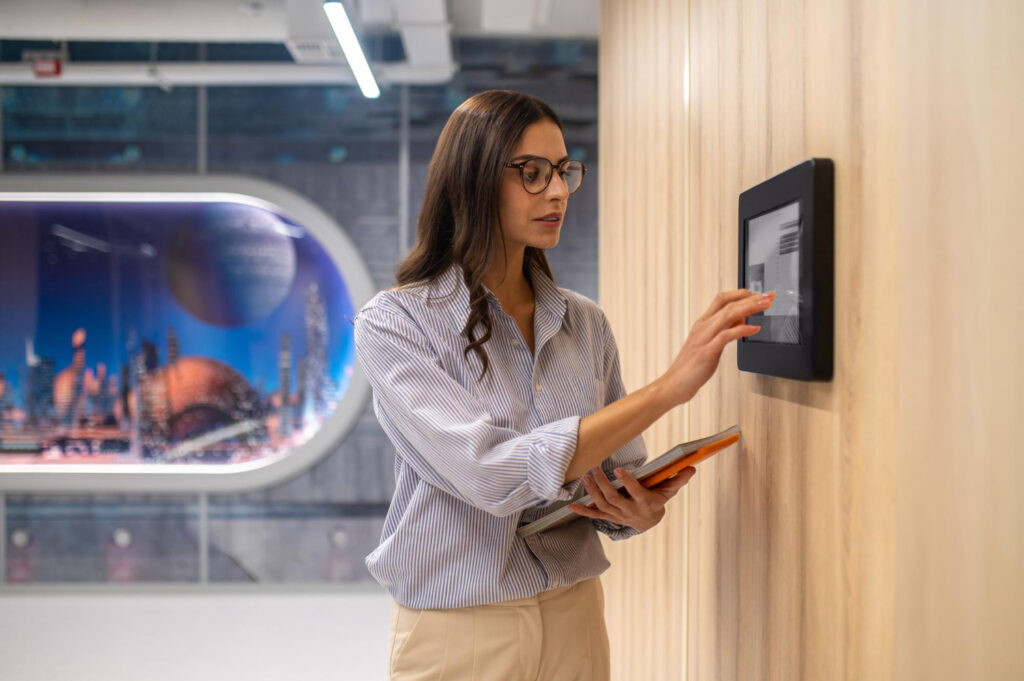Building Security – Within the dynamic domain of commerce, where business operations continue nonstop, the critical importance of fortifying commercial establishments against the imminent menace of criminal activity cannot be overstated. Protecting businesses from the pervasive menace of crime and theft necessitates proactive measures, strategic planning, and innovative solutions in the ever-changing security landscape.
Importance of Commercial Building Security & Planning
Ensuring building security is of the utmost importance in order to protect assets, guarantee safety, and preserve confidence. By performing a Breeam security needs assessment, organizations are able to detect weaknesses, reduce potential threats, and execute customized security protocols. Businesses can safeguard their premises, assets, and reputation against potential threats and intrusions by placing building security as a top priority.
Prevent Crime and Theft:
Consider this: Your prosperous enterprise, which symbolizes achievement and aspiration, is unexpectedly besieged by criminals with malicious intent. Unauthorized intrusion, theft, and vandalism detrimentally affect your arduously acquired accomplishments, jeopardizing not only your fiscal sustainability but also the reputation of your organization. Strict commercial building security is required at this juncture.
Better Customer Experience:
In the realm of business competition, customer experience holds an absolute advantage. Establishing a secure environment fosters patron confidence by providing reassurance that their well-being is of the utmost importance. Consider entering a commercial establishment that lacks any security measures and is completely obscured by darkness at every corner. Would one experience a sense of comfort? Not likely.
Enhanced Security Protocols
Enhanced building security protocols, including adequately illuminated areas, conspicuous surveillance equipment, and adequately trained security staff, foster an inviting ambience for patrons. Creating an atmosphere of safety and protection incentivizes customers to prolong their stay and revisit with assurance, consequently enhancing customer allegiance and stimulating financial expansion.
Data-Driven Insights and Analytics:
Particularly in the digital era, data prevails. The scope of commercial building security transcends mere physical protection and includes data security and analytics as well. Through the utilization of sophisticated surveillance technologies and analytics software, organizations can extract invaluable knowledge pertaining to consumer conduct, pedestrian movement patterns, and possible breaches in security. Data-driven building security solutions function as a potent multiplier in the continuous effort to combat criminal activity.
Intelligent Automated Processes:
Manual security patrols and laborious access control procedures have become obsolete. The introduction of intelligent automation has significantly transformed the domain of commercial building security by providing efficient methods for anticipating and addressing potential threats.
Access Control Systems:

Within the complex network of contemporary commerce, access control systems function as vigilant guardians of security, precisely and efficiently governing points of entry and exit. These systems provide a comprehensive approach to access control, utilizing biometric scanners and electronic key fobs to ensure that solely authorized individuals are permitted to enter restricted areas.
Keyless Entry
Keyless entries effectively eradicate the susceptibility associated with conventional keys, which may be duplicated, lost, or stolen. Conversely, personnel can enter restricted regions by employing individualized credentials, thereby reducing the likelihood of unauthorized entry and fortifying the overall security stance.
Easy-to-Use Systems:
Mastering the intricate landscape of security in commercial buildings can be a challenging undertaking. Security administration is simplified by user-friendly interfaces and intuitive design elements, enabling organizations to effortlessly administer their security infrastructure.
Surveillance System
Intuitive security systems empower end-users to manage everything from monitoring surveillance streams to establishing access permissions. This empowers them to respond promptly to security incidents and integrate seamlessly with existing workflows. In spite of this, in regards to security administration, simplicity is supreme sophistication.
Conducting a Risk Assessment:
Given the dynamic nature of security threats, it is critical to prioritize proactive planning. The implementation of a thorough risk assessment serves as the cornerstone for the development of efficient security plans, allowing organizations to detect possible susceptibilities, rank mitigation approaches in order of importance, and allocate resources prudently.
Assessing Physical Vulnerabilities
Through the process of assessing physical vulnerabilities, evaluating threat vectors, and analyzing historical data, organizations can customize their security protocols in order to effectively mitigate particular risks. It is comparable to fortifying the fortifications of a castle prior to an enemy besiegement; it is a preemptive assault against prospective dangers.
Bottom Line
It is impossible to exaggerate the significance of building security and planning in commercial buildings. Protecting buildings and businesses from the ever-present menace of illicit activity requires proactive measures in a world fraught with unpredictability and danger.
